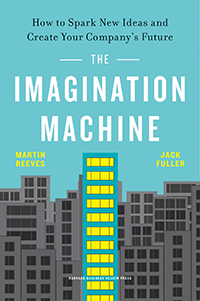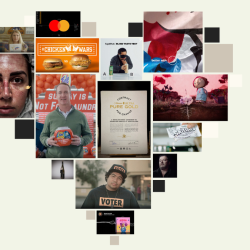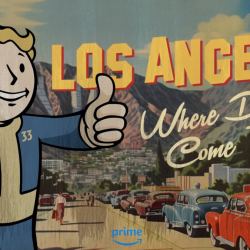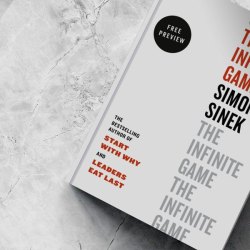“Dissecting humour is like dissecting a frog”, said the British comedian, Barry Cryer, “no one laughs and the frog dies.”
Is it the same with creativity? Would any attempt to explain this essential human become distracted by structure and function and throw out that essence along the way?
Or will it be like reading a book on tennis? It’s no substitute for practice on the courts, but an alternative way of learning some core skills while you’re waiting for a partner.
Three recent books on creativity take three entirely different approaches to explaining their subject. Each of them is worth reading for their author’s widely different provenance.
So, a strategic consultant, a Stanford Professor and John Cleese walk into a bookshop. What happened next?
‘The Imagination Machine’, by Martin Reeves and Jack Fuller

The strategic consultant is Martin Reeves, the lead of BCG’s think tank, the Henderson Institute. Strategic consultants? Think tank? The old notions of creativity — where it’s needed, where it happens, and who’s allowed to do it – are outdated.
In some previous world, where there was stability and predictability, you could leave the running of business to strictly linear thinkers, and leave the creativity to the chaps with the crayons in the marketing department. Martin’s point, in The Imagination Machine (co-authored with Jack Fuller, an expert in neuroscience) is that creativity is now required throughout any organisation.
In a deeply volatile and uncertain world, imagination is the thing that allows someone to see and create valuable possibilities that don’t yet exist.
The question of whether AI can drive your business’ growth isn’t one for the techies. Of course AI can drive your business’ growth: AI can do a surprising number of things and many of those can individually help your business grow. But making that happen depends on encouraging a creative mindset among your colleagues so you uncover where and how it can be applied to drive growth.
And how should your organisation grow and transform, what should working hours be, where should you reinvent and where should you simply rejuvenate? These are all complex questions without simple answers, and creative imagination is required to find the better answers.
Like all good strategic consultants, the author maps out a process, with 6 steps from “The Seduction” (how to open yourself up to surprises), through ways of generating new ideas, spreading them, testing them with real world feedback and finally, “The Encore” where you get to repeat the process.
Despite the authors’ obvious intellect, the ideas are there for you, mixed with some dry asides and a few illustrations to give the eyes and mind a rest. The physical book is an unusual format: landscape rather than portrait, which encourages you to go and read it somewhere softer, where you can flop it open and slowly consider what’s being offered.
‘Creative Acts for Curious People’, by Sarah Stein Greenberg

One of the challenges often overlooked in company meetings is, of course, how the leadership team can pool their skills to withstand a zombie apocalypse. This idea is covered as one of the fun exercises in Sarah Stein Greenberg’s Creative Acts for Curious People. Sarah is the executive director of Stanford University’s renowned d.school, where humans are taught to think like real designers.
In this world, design isn’t about arranging images on a page or pieces in a 3D world, it’s about having a different way of thinking. And that way of thinking starts by reframing what the challenge appears to be, then drawing on diverse resources and empathetic thinking to come up with an elegant solution.
Sarah’s book isn’t a front-to-back read. Instead, it’s a lurker — hanging there on the bookshelf until you find yourself stumped on a problem. There are a dozen different sections, each one looking at different parts of the creative design process, with more than 80 imaginative exercises to lead you.
Stanford’s d.school has a cult feel about it. Not everyone knows about it. But those who do, they feel they’re onto something exclusive and special. Of course, ‘cult’ is just the term we use when we’re on the outside of the party, wondering what all the ritual and music and laughter is about. Reading this book, with fun exercises, its odd shape, its graphic novel approach to a case study where design thinking changed the lives of hundreds of thousands of hospital patients in India, made me want to join the cult.
‘Creativity: A Short and Cheerful Guide’, by John Cleese

John Cleese’s book made me laugh from the subtitle onwards. The man himself sometimes comes across as very ‘other’. Because of his height, most photographs of him seem to give him a looming tower look. In character and in writing, he is hugely funny; but out of character, his speech is carefully considered, nurtured perhaps by his law degree, and he doesn’t seem to want to make accommodations in his certainty for others’ points of view. His book is Creativity: A Short and Cheerful Guide.
He too quickly unbases the notion that creativity is only for the creative types and sets out across 100-odd pages strategies for creating the circumstances in which we can all find ways of doing something better than how it’s being done now.
His book reads like a ramble around a carefully maintained university park with an uncle. There’s some biography to explain the worldview, some mentions of psychological research to help a point get across. Advice isn’t directional so much as lateral. You could consider that what’s stopping you being creative is your rush to decide things, instead of letting an idea emerge over time. Perhaps you want to think about making sure your thinking time can’t be interrupted.
Sometimes you wonder when was the last time Uncle had to butter his own toast (he reminds us of a sign you often see on London Underground carriages: “Lower window for ventilation”).
Sometimes, just hearing that he too has struggled with fallow periods and frustration, is enough to make you happier at the finish of the walk than when you started.
He shares Martin’s view that exposing your ideas to the outside world is critical and shares one piece of advice I took home with me: Get your panic in early. Let the fear energise you to make notes, assemble thoughts, without wanting any of them to be ‘the thing’.
Whether any of the books will help you to be more creative depends on what I’ve come to call the ‘chiropractor’s heuristic’: that great guy who fixed your back after you’d seen so many other quacks, probably wasn’t a universal genius. It might not have been the degree certificate on his wall or his wonderful insight that fixed you. It’s probably just that he had the right procedures for your particular pain. Choosing wisely is itself a core skill in creativity.
Featured image: Zorick D / Unsplash
































